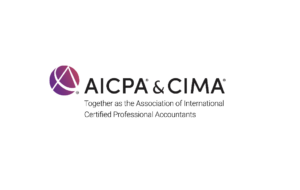Investec for Business's Marc Rosen discusses strategies to utilise when making business investments.
South Africa’s current economic climate is facing considerable challenges, not least of which is the continued struggle with the electricity supply and the direct impact this has had on business or the role it has played in the World Bank’s recent decision to cut South Africa’s growth forecast to below 1 percent for 2020. There is no doubt that lost revenue generation from reduced operating hours (think retailers, manufacturers and mining) will ultimately lead to lost profitability for South African businesses and therefore lower tax collections by SARS, which has already felt the effects of the weakened economy having missed its 2018/2019 target.
So where to from here?
We know that capital investment and investment into business is required if we are to kickstart GDP growth but it’s easy to see why South African businesses are questioning their investments in capital expansion in this harsh operating environment, so the question really becomes – how do you perform against a backdrop of uncertainty? What strategies could you utilise to help support growth in this climate?
1. Finding ways of extending payment terms to assist in supporting the order cycle
The impact of an uncertain economic environment has undoubtedly led to cashflow pressures. Take manufacturers for example, businesses find themselves sitting on inventory for elongated periods, due to longer conversion cycles as a result of reduced production hours. Those businesses with perishable items are in an even more invidious position and may see a larger spike in impaired products unless they order on a much shorter cycle, more regularly. However, another viable option is allowing a customer additional time to settle their creditors by changing the creditor from the product supplier into a financial trade partner. In doing so, the business can pay for their stock later, accommodating the longer operating cycle required to manufacture and sell goods.
2. Unlocking the cash tied up in the debtor’s book
In this difficult economic environment, a business’ customers are often also under pressure and require additional time to pay. This then automatically creates further cash flow pressure for the supplier, as they now have to wait longer for cash to be received – often the same cash that is relied on for their repurchase of stock. Again, by examining how to raise funding, against the debtor (receivables), a business can bring forward the timing of actually receiving cash, by allowing a financier to provide that funding, in advance, against those receivables.
3. Leveraging assets to alleviate cash drain
Businesses can also look to enter into lease agreements or other financing mechanisms to reduce the large upfront cost associated with purchasing capital assets outright. Financing against assets allows a business to purchase capital equipment and repay for that asset over a longer period in time, which alleviates the upfront cash drain on the business.
4. Changing your view on debt
Lastly, the traditional view on debt must change. Whilst previously seen as a negative requirement, if a business correctly identifies where its money is tied up (be it in its stock, debtors or capital assets) and finds financing options to unlock that invested capital, it can benefit tremendously. In fact, managed debt can be one of the most cost-effective forms of financing available to a growing business. Debt instruments allow a robust business to utilise their balance sheet to unlock liquidity in order to operate more efficiently, giving a business access to the cash resources they require at the correct time.
Ultimately, businesses that allow for the deployment of their cash resources, at the optimal points in their operating cycle, can generate increased turnover levels and in turn greater profitability. This hopefully can assist in bucking the current trend and finding a means to grow and in turn, contribute to increased GDP for South Africa.










